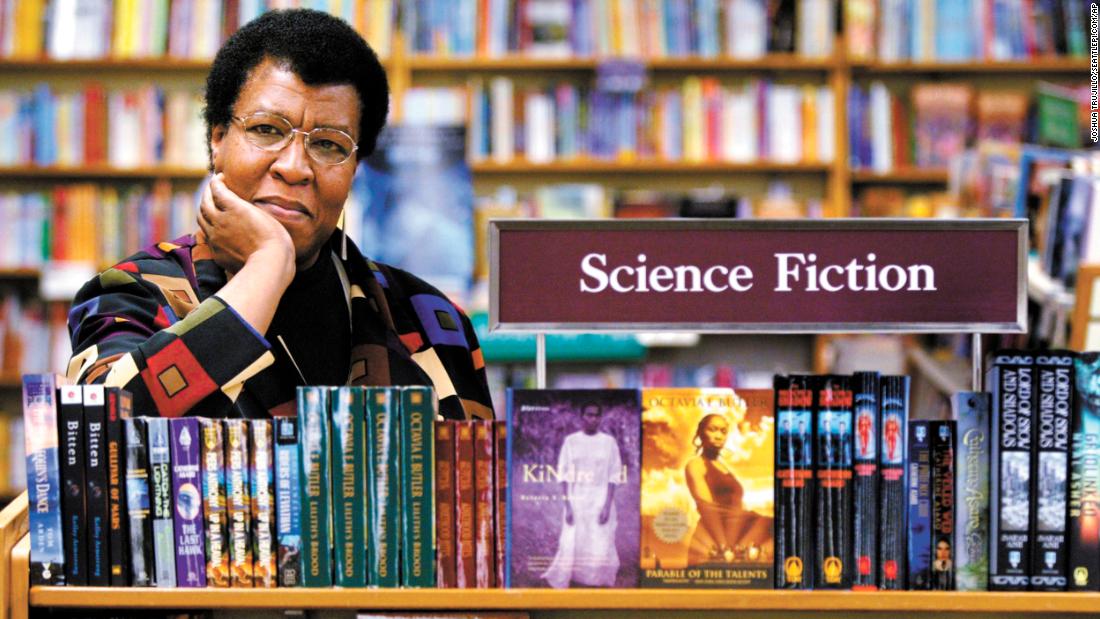In truth, she is hardly the only author whose work seems to have predicted this turn of events, or have urgently examined other ways in which people are stripped of their reproductive freedoms. Writers of speculative and science fiction, many of them women, have often explored these narrative themes. Whether you’re curious about where some creative minds think this path could lead or just in need of some literary catharsis, here are six such works to check out.
“The Future Home of the Living God” by Louise Erdrich (2017)
Set in a dystopian future, this book follows Cedar Hawk Songmaker, a 26-year-old Native American woman who becomes pregnant. The problem is that she’s living in a society where there are signs that human evolution has begun to reverse itself (though the book isn’t explicit on what that means), and the US government has ceded control to shadowy organizations such as the Unborn Protection Society (UPS), which rounds up women and forces them to give birth in a controlled setting so that their babies can be monitored for signs of genetic anomalies. Cedar tries to escape this fate by hiding with her birth family on the Ojibwe reservation in Minnesota, where she was born.
Through a complicated narrative that nonetheless moves along at a thriller’s pace, Erdrich suggests that ending reproductive rights for women is a sign that humanity’s time on Earth has run its course — hastened in part by the way people have destroyed the environment. When she published the novel in 2016, she noted to readers that she had begun the book 14 years earlier and returned to it with a newfound sense of urgency. “I only have to look at photographs of white men in dark suits deciding crucial issues of women’s health to know the timing is right,” she wrote.

Future Home of the Living God Credit: Courtesy Heather Drucker
“When She Woke” by Hillary Jordan (2011)
“When She Woke” centers around a society where abortions are illegal in the US and the country is ruled by fundamentalist Christians from Texas. Instead of imprisonment, the authorities force criminals to permanently wear their punishment by tinting their bodies a color that denotes their crime. For the main character, who is convicted of murder after having an abortion, that means walking through life with red skin. A modern-day retelling of “The Scarlet Letter” — Jordan confirms the link in the book’s acknowledgements — the story examines the implications of persecuting women for the crime of exercising their reproductive freedom.

When She Woke Credit: Algonquin Books
“The Farm” by Joanne Ramos (2019)
In Ramos’ debut novel, the author combines issues of class, immigration and reproductive freedom in a story that unfolds at a luxury retreat in upstate New York where surrogates are pampered with endless amenities and given the promise of wealth for the delivery of a healthy child. Monitored for nine months and cut off from their lives, the “hosts” include Jane, a Filipina immigrant who was desperate for a new beginning but soon finds herself wanting to leave. Ramos’ stark tale of inequality, as pregnancy becomes the burden of the marginalized, is even more urgent as freedom of choice and access to health care becomes increasingly divided in the US.

The Farm Credit: Courtesy Random House
“Dawn” by Octavia E. Butler (1987)
Set after a nuclear apocalypse, Lilith Iyapo awakens hundreds of years past her time to find herself on board a spacecraft, saved from death with other survivors and kept in stasis by an alien race. Her captors want to repopulate Earth — they must procreate with other species to survive as well — and they mandate all procreation, no matter how the remaining humans feel about interbreeding. The first book in the “Lilith’s Brood” trilogy, Butler’s vision is a far-future take on colonialism and the pressures one woman faces to revive her species.

Dawn Credit: Courtesy Grand Central Publishing
“Red Clocks” by Leni Zumas (2018)
Depicting a world in which a Personhood Amendment has been added to the US Constitution, rendering not only abortion, but also in vitro fertilization, illegal, “Red Clocks” at times eerily mirrors the politics of reproduction in the US today. The novel follows the lives of five fictional women living in a small town in Oregon who are grappling with the ways their bodies are governed, including Ro, a 42-year-old who wants to become a mother and is forced to try a procedure that leaves her dizzy and sick, and 15-year-old Mattie, who realizes that if she tries to abort her pregnancy, she could be jailed for years.

Red Clocks Credit: Little, Brown and Company
“The Future of Another Timeline” by AnnaLee Newitz (2019)
Set in 2022, this novel is about an alternate US where abortion has been illegal for decades, and humans discover time machines. One of the main characters is Tess, a secret agent for the Daughters of Harriet, a feminist time-traveling group on a mission to stop the Comstockers, a group of misogynistic crusaders who want to alter the past to further strip women of their rights. Tess wants to restore what’s been lost, including abortion protections, and does so by changing the course of history.
Newitz has spoken about the parallels between their novel’s alternate reality and the current state of the US. In a recent op-ed for Slate, they wrote, “The alternate timeline I imagined in my novel was already unfolding within America’s official story of abortion access for everyone…All I had to do was describe what was actually happening around me.
“In some ways, the only difference between my novel and many Americans’ reality is that my activists have access to some really cool time machines.”

Annalee Newitz Credit: Liz Hafalia/The San Francisco Chronicle/Getty Images
Top image: Octavia E. Butler in 2004.







More News
Harvey Weinstein Conviction Thrown Out
After Apartheid
Columbia’s University Senate Is Said to Be Redrafting Resolution Admonishing Its President